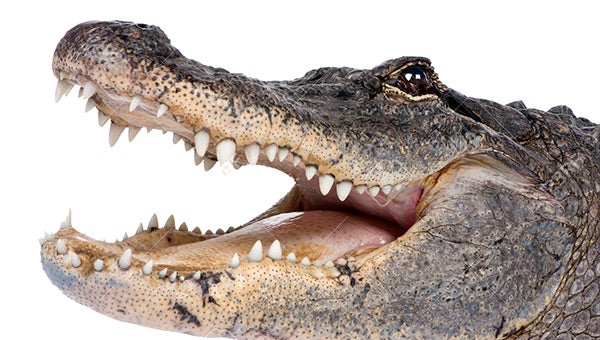Biologist: ‘Gators like seclusion
Published 12:00 am Thursday, June 23, 2016

Florida wildlife officials yesterday concluded their investigation into an alligator attack that killed a toddler on June 14, and said they are confident they have euthanized the alligator. The Florida Fish and Wildlife Conservation Commission on Wednesday said it had trapped and euthanized six alligators in the general area, and no other alligators capable of the attack were found.
Present, not abundant here
Earlier this month, an alligator pulled a toddler into a lagoon at Disney World.
Divers found his body in the Seven Seas Lagoon on the grounds of a Disney resort. His body was intact.
That tragedy has left many wondering about alligators locally.
Wildlife biologist Mark Bailey said that any large permanent water body, flowing or still, can support alligators.
“Rivers, sloughs, and big swampy wetlands like beaver ponds are favored places,” he said. “Some of the larger streams in our area that support alligators include Conecuh River, Sepulga River, Yellow River, Patsaliga Creek and others.”
Bailey said that while it’s not typical to find alligators in smaller ponds that are occasionally dry, it does occur.
“Alligators will move overland when their slough or pond dries up or when they are dispersing, but it is very rare to see an alligator very far from water,” he said.
Still, Bailey said that alligators are not as abundant in the local area as they are in Florida and the Mobile-Tensaw delta, but he said he wouldn’t consider them scarce.
“They have definitely increased in numbers in the past few decades, due to their being protected,” he said. “However, some places where they were once commonly seen, such as Open Pond and Buck Pond in the Conecuh National Forest, do not presently have alligators. I suspect alligators in our area tend to be in places that are fairly remote and seldom visited by people.”
The Alabama Extension office said this week that American alligators, Alabama’s largest reptile, have made a remarkable recovery, after once being nearly extinct.
“Alligators are opportunistic predators and sometimes scavengers,” said Jordan Graves, an Alabama Extension regional agent in forestry and wildlife. “Their diet can consist of fish, turtles, beavers, deer and wild pigs. When they are hungry, alligators will eat just about anything that comes close enough. The world record alligator had two squirrels and an adult white-tailed doe in its stomach when it was harvested.”
That world-record alligator was caught in September 2014 in Camden along the Alabama River. It measured 15 feet, 9 inches and weighed 1,011.5 pounds.
Male alligators in the wild on average will grow up to 11 feet, 2 inches and females will reach 8 feet, 2 inches long. Large males can weigh up to 1,000 pounds. They can live 30 to 50 years.
Auburn University Herpetologist Dr. Craig Guyer said that an alligator can reach speeds of 10 mph on land and 20 mph in water.
“Alligators’ behavior varies geographically,” he said. “Alligators in the Okeefenokee Swamp are at the nest about 65 percent of the time, but at some Florida sites nest attendance is only about 15 percent of the time. Females are known to rush at humans who wander too close to a nest, but there are cases reported in which people approached the nests with no reaction from the female.”
Bailey said if you see an alligator, there is no need to be terribly concerned.
“Just keep a safe distance,” he said. “Alligators are naturally wary and afraid of people, but if the alligator moves toward you, it is likely a problem gator that has begun to associate people with food. Under no circumstances should you ever feed an alligator.”
Bailey said that feeding alligators endangers the lives of people and is terribly irresponsible.
“An alligator is almost certainly not going to come after you if it does not recognize you as one of its typical prey items,” he said. “However, to an alligator, a small child or dog is within the size range of prey, and we have to be particularly careful about letting children or pets near where alligators may be. I certainly would not swim where I know there are large alligators, and I would be particularly careful around alligator-inhabited waters after dark, which is when they generally are hunting.”





